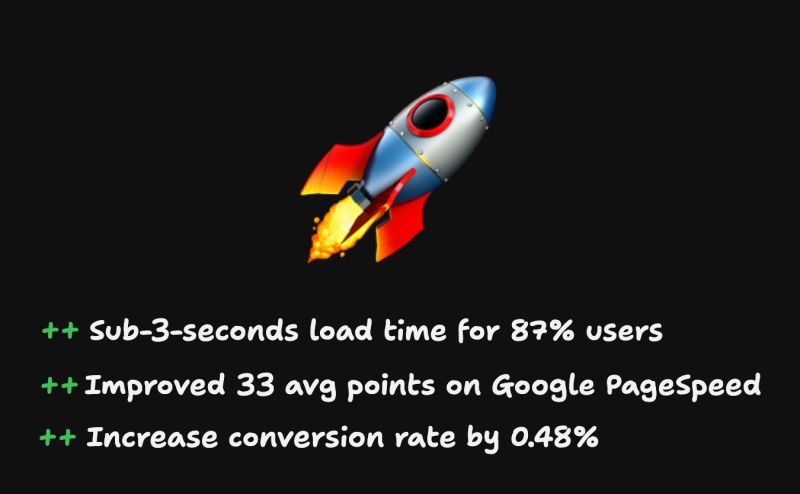
84.7% of Our Users Now Have Sub-3 Seconds Page Load
When I was a new joiner at my current company, the team needed to complete a critical project: improving the frontend web performance of our flagship app.
Good performance is critical since our web app is used in multiple platforms, including native mobile app via web view.
Here’s what I contributed to have a end result of a web app with sub-3-second load times for 84.7% of 3M+ yearly unique visitors, improving Google PageSpeed score by 33 points and increasing conversion rates by 0.48%:
Key Contributions to Performance Improvement
- Confirm Goals and Metrics: Confirmed the end goal of performance improvement, the current state of performance, and methods of performance measurement. I used Google Lighthouse, PageSpeed Insights, and Google CRUX.
- Identify Bottlenecks: Discovered we were lacking in LCP (Largest Contentful Paint) and TBT (Total Blocking Time).
- Adopt Just-In-Time Learning: Practiced Just-In-Time Learning for the improvement process.
- Optimize LCP: Reduced LCP by not using JavaScript to render the initial HTML, deferring the loading of related images, and optimizing render performance.
- Optimize TBT: Reduced TBT by deferring the loading of third-party external scripts and minimizing the shared app bundle size through dynamic imports & lazy loading.
- Prevent Regression: Set up methods to prevent future performance regression by using linters, custom scripts, and pre-commit hooks.
Obviously what I did was just a part of the equation. Kudos first and foremost to my teammates that contributed massively to this achievement: Azad Shukor, Adam Sulthoni Akbar, and Iqbal Mohamad Zainuddin. Especially Adam, who was the lead of the project 🔥.
That’s it! What would be your approach if you were in the same shoes? Please let me know in the comments below. See you later in the next post 👋